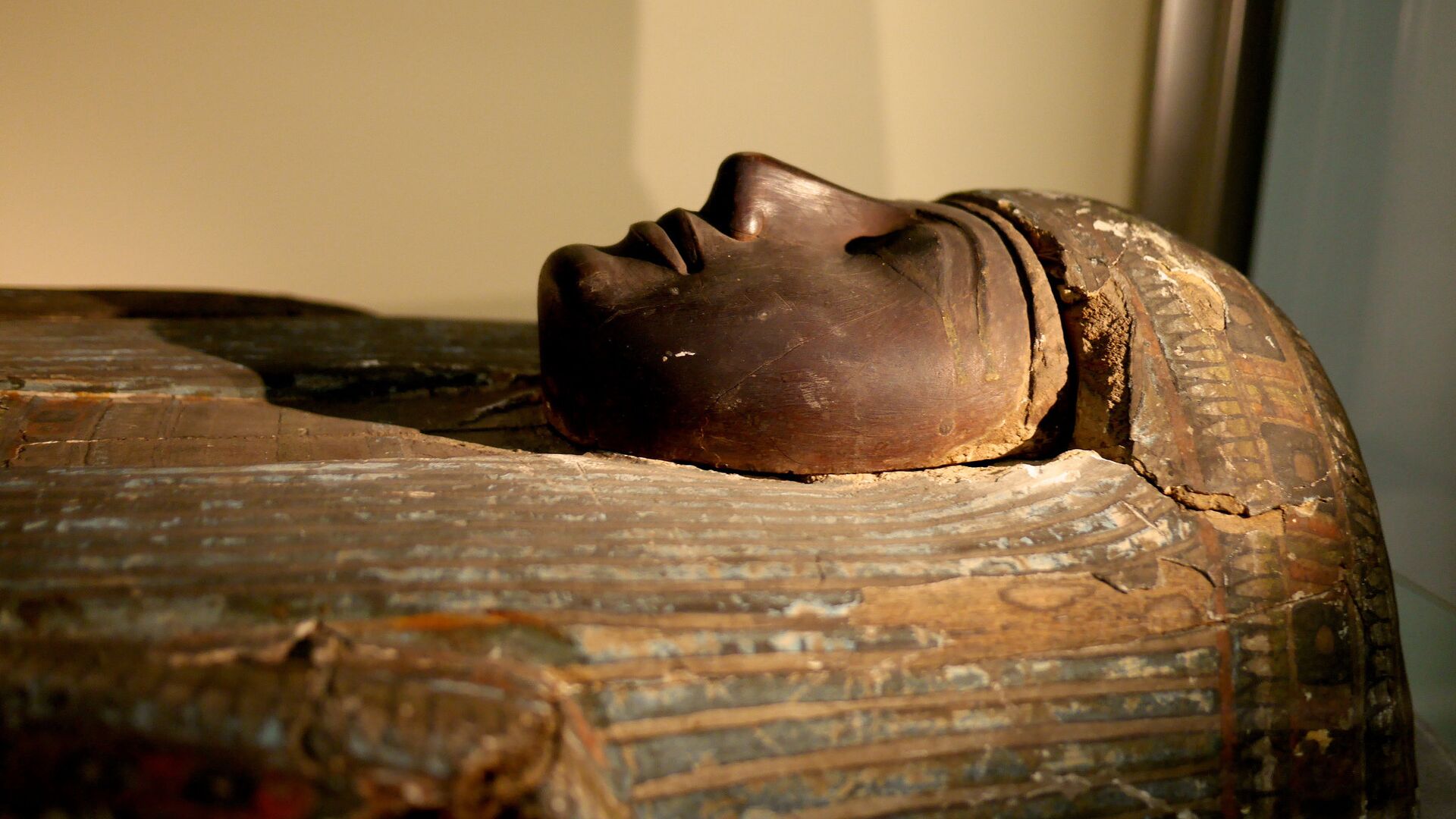https://sputnikglobe.com/20221123/new-study-offers-a-big-180-on-ancient-egypts-mummification-1104593921.html
New Study Offers 'a Big 180' on Ancient Egypt's Mummification
New Study Offers 'a Big 180' on Ancient Egypt's Mummification
Sputnik International
Mummification is the process of preserving a dead body as a mummy. Egyptians typically removed the major organs from a corpse as part of the mummification... 23.11.2022, Sputnik International
2022-11-23T13:29+0000
2022-11-23T13:29+0000
2022-11-25T13:48+0000
science & tech
egypt
egyptian mummy
discovery
https://cdn1.img.sputnikglobe.com/img/106046/28/1060462828_0:108:2049:1260_1920x0_80_0_0_ae5fdb2ef10ee09111bce568c49c1e30.jpg
For a long time, it was believed that mummification was about preserving bodies after death, yet a new theory states that its purpose was to help the deceased reach divinity, according to researchers from the University of Manchester's Manchester Museum.This misconception began with Victorian researchers, who wrongly determined that ancient Egyptians were preserving their dead just as they might preserve fish: with salt.However, the salty substances used in these processes were different. A key ingredient in mummification was not just salt, but a naturally occurring mineral, known as natron, which was also used in temple rituals for cleansing.Scientists point out that another material - senetjer - which literally means 'to make divine', is usually associated with mummies.According to this new concept, removing the internal organs and placing bodies within sarcophaguses have a deeper meaning and may symbolize giving the body divine status and the idealized image of the divine form, respectively.
egypt
Sputnik International
feedback@sputniknews.com
+74956456601
MIA „Rossiya Segodnya“
2022
News
en_EN
Sputnik International
feedback@sputniknews.com
+74956456601
MIA „Rossiya Segodnya“
Sputnik International
feedback@sputniknews.com
+74956456601
MIA „Rossiya Segodnya“
egypt, mummies, mummification, discovery, purpose of mummification, egyptology, science
egypt, mummies, mummification, discovery, purpose of mummification, egyptology, science
New Study Offers 'a Big 180' on Ancient Egypt's Mummification
13:29 GMT 23.11.2022 (Updated: 13:48 GMT 25.11.2022) Mummification is the process of preserving a dead body as a mummy. Egyptians typically removed the major organs from a corpse as part of the mummification process.
For a long time, it was believed that mummification was about preserving bodies after death, yet a new theory states that its purpose was to help the deceased reach divinity, according to researchers from the University of Manchester's Manchester Museum.
This misconception began with Victorian researchers, who wrongly determined that ancient Egyptians were preserving their dead just as they might preserve fish: with salt.
"The idea was that you preserve fish to eat at some future time," Price said. "So, they assumed that what was being done to the human body was the same as the treatment for fish."
However, the salty substances used in these processes were different. A key ingredient in mummification was not just salt, but a naturally occurring mineral, known as natron, which was also used in temple rituals for cleansing.
Scientists point out that another material -
senetjer - which literally means 'to make divine', is usually associated with mummies.
"When you're burning incense in a temple, that's appropriate because that's the house of a god and makes the space divine. But then when you're using incense resins on the body, you're making the body divine and into a godly being. You're not necessarily preserving it."
According to this new concept, removing the internal organs and placing bodies within sarcophaguses have a deeper meaning and may symbolize giving the body divine status and the idealized image of the divine form, respectively.

